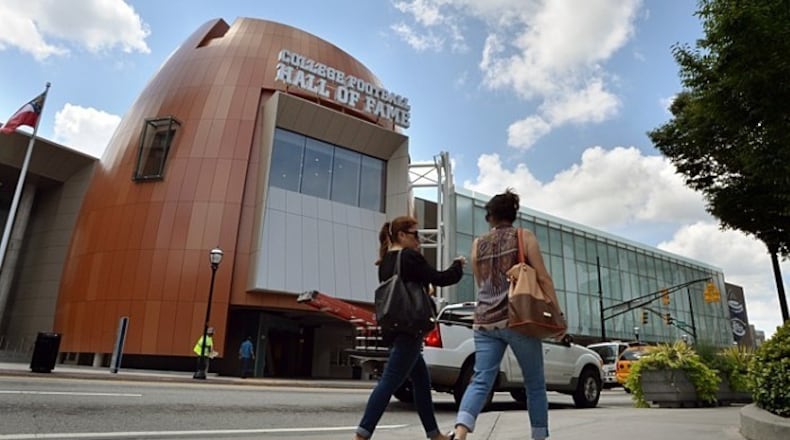Over the past 49 years the Chick-fil-A Peach Bowl has left a lasting mark on college football. As the bowl prepares for its 50th game, here are three ways it has changed the sport.
Re-creating the early-season, neutral-site game:
In 2006, the BCS (the predecessor to the College Football Playoff) decided to bid out national championship games to other bowls not already in the Big Four -- the Fiesta Bowl, Sugar Bowl, Rose Bowl and Orange Bowl. The Peach Bowl bid for a championship contest to take place in Atlanta, but were unsuccessful when the BCS decided to go to a double-host model, where the Big Four would rotate hosting the national championship after their bowl game.
After missing out, Gary Stokan, the CEO and President of Peach Bowl, Inc. concluded that if the Peach Bowl couldn’t be highlighted at the end of the season, it would be highlighted at the beginning of the season. So, in 2008 the Peach Bowl created the Chick-fil-A Kickoff game. Organizers intended for the game to become a national spotlight game, on par with the Kickoff Classic held in the Meadowlands from 1983–2002, and the Disneyland Pigskin Classic in the 1990s. The Chick-fil-A Kickoff game became the first big-time, neutral site game since the Kickoff Classic ended.
After seeing the success of the Chick-fil-A Kickoff game, more high-profile opening weekend games began to pop up, like the Cowboy Classic (played in Arlington, Texas). This season the “Greatest Opener of All-Time” between No. 1 Alabama and No. 3 Florida State in Atlanta was just one of a half-dozen games to pit high-quality teams against each other on a neutral field.
Bringing the College Football Hall of Fame to Atlanta:
In 2014, the new 94,000-square foot College Football Hall of Fame opened its doors in the heart of college football country. The Hall of Fame, which had been in downtown South Bend, Ind., near Notre Dame, was in need to a facelift, Stokan said after a visit to the Hall of Fame in the early 2000s.
When he noticed there wasn’t anything the Hall of Fame about Paul “Bear” Bryant, he knew something had to change. For nearly a decade he and the Peach Bowl put a plan in motion to bring the Hall of Fame to Atlanta. The National Football Foundation agreed to relocate the Hall of Fame in 2009, with groundbreaking on the new mecca of college football to begin in 2013.
When the new Hall of Fame finally opened its doors, the building on Marietta Street – adjacent to the Georgia World Congress Center and Centennial Olympic Park – made Atlanta the epicenter of the college football world.
Being the most charitable bowl in college football:
In 1968, George P. Crumbley came up with the idea to start the Peach Bowl as a way to raise money for his favorite charity -- the Georgia Lions’ Lighthouse, an organization dedicated to helping underserved Georgians with vision and hearing care. Nearly 50 years later the same sentiment of giving hasn’t waned from the Peach Bowl.
Since 2002, Peach Bowl, Inc., has distributed $22.1 million in charity and scholarship contributions to organizations in need, making it college football’s most charitable bowl game. Stokan said this season the total amount in team payouts for the game’s 50-year history will reach more than $167 million.
He also said this year the Peach Bowl will likely give $1.7 million in charitable donations, while most other bowls will hover around the $1 million mark.
About the Author
Keep Reading
The Latest
Featured


